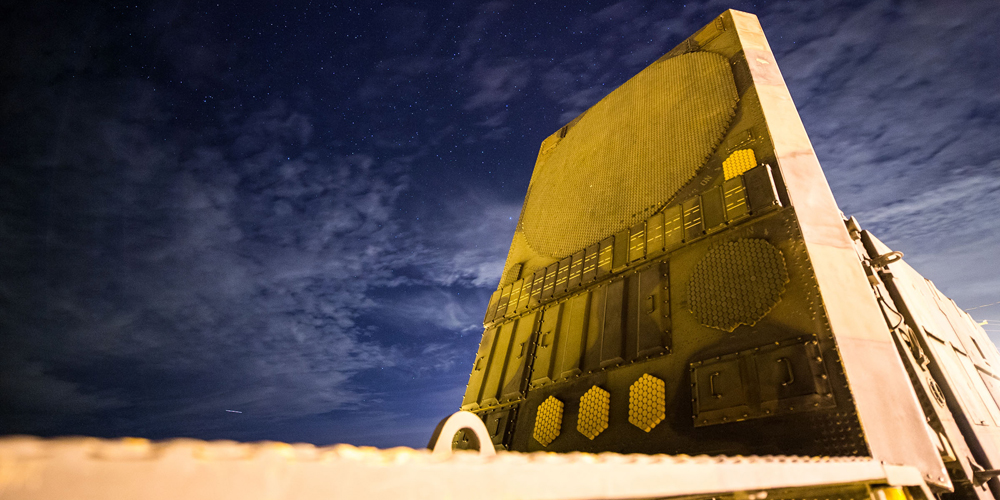
The PATRIOT Missle Segment Enhancement improves fire-control, radar and target tracking for the weapon, which can destroy enemy drones, aircraft and Theater Ballistic Missiles.
By Kris Osborn, Scout Warrior
The US Army and key allies around the world are now analyzing a radar and targeting upgrade to the Patriot missile able to increase the range of threats it can destroy — to include a wider range of drones, rotary wing aircraft, cruise missiles, extended range tactical ballistic missiles and high-speed aircraft.
The Raytheon prototype upgrade includes the addition of new technology designed to keep pace with fast-emerging threats well above and beyond the tactical ballistic missiles for which the weapon was initially designed.
“The range of the threats has grown well beyond tactical ballistic missiles that everybody was focused on,” Joe DeAntona, Vice President for Business Development and Strategy, Raytheon Integrated Air and Missile Defense, told Scout Warrior in an interview.
This prototype of Raytheon’s proposed new Patriot radar uses two key technologies – active electronically scanned array, which changes the way the radar searches the sky; and gallium nitride circuitry, which uses energy efficiently to amplify the radar’s high-power radio frequencies, a Raytheon statement said.
The so-called “AESA GaN” radar enables a 360-degree capability and is more powerful, more efficient and cheaper to run and maintain, Raytheon developers added.
This proposed Raytheon upgrade is happening alongside current Army efforts to upgrade the radar, fire control technology and flight software for the PATRIOT missile — as a way to sharpen its target tracking ability against approaching enemy attacks.
The Army awarded a contract-extension with Lockheed Martin to further develop these technological advances for the weapon.
The $ 13.4 million modification includes engineering services for phased array tracking radar intercept on the PATRIOT Advanced Capability 3 (PAC-3) Missile Segment Enhancement (MSE) – also known as PAC-3 MSE.
“The PAC-3 MSE program includes flight software, flight testing, modification and qualification of subsystems, production planning and tooling, and support for full Patriot system integration,” according to Lockheed.
Over the last several years, the Army’s Patriot missile destroyed a mock-enemy theater ballistic missile target in test-firing in order to demonstrate new guidance technology built into the weapon, Army officials said.
The Patriot Advanced Capability-3 is an advanced kinetic energy hit-to-kill interceptor surface-to-air missile designed to knock out incoming threats and protect ground forces, buildings and other assets. As a kinetic energy interceptor, the weapon relies upon the sheer force of impact to destroy approaching enemy attacks and does not need to use explosives – thus the “hit-to-kill” description.
The Patriot can be used for close-in threat approaching targets such as drones, cruise missiles and even enemy aircraft. At the same time, the missile can destroy longer-range theater ballistic missile targets as well, Army officials have explained.
The missile system also functions in tandem with the Terminal High Altitude Air Defense, THAAD, system to provide the U.S. with a “multi-tier theater defense.”
To intercept an incoming missile, it steers towards a predetermined intercept point chosen by its ground-based fire solution computer, selects the proper trajectory, and then applies a direct, body-to-body hit on the target.
In service since the early 80s, Patriot missiles have been upgraded several times, including this latest MSE software improvement. Recent tests have been designed to asses an even newer target-tracking technology called Post Deployment Build, or PDB-8, service officials explained.
“PDB – 8 software is a major software build that provides improved capability against the evolving threat and is fully compatible with the IBCS (Integrated Battle Command System). The air and missile defense threat continues to progress and proliferate, and the Patriot system is continually evolving to deliver threat-paced capabilities in the current and persistently-changing threat environment,” Dan O’Boyle, spokesman for Program Executive Office, Missiles and Space, told Scout Warrior in a written statement last year.
The PAC-3, which is deployed in military theaters around the world, is a lower-tier, hit-to-kill missile and member of the Ballistic Missile Defense System. It features a solid propellant rocket motor, aerodynamic controls, attitude control motors and inertial navigation.
During a test, at White Sands Missile Range, N.M., the Patriot used its Active Electronically Scanned Array to track data, detect and engage the target, an Army statement said. The system uses radar, sensors, guidance technology and an integrated fire control technology to track and destroy targets.
“Preliminary test data indicates a successful Juno (Theater Ballistic Missile-like) target intercept with missile number one and a successful test flight. The test was conducted to:demonstrate the capability of the PATRIOT system, using PDB-8 to detect, track, engage and kill a threat representative TBM (Theater Ballistic Missile) with PAC-3 MSE Missiles.
The Patriot is now in service with at least 13 countries around the globe, including five NATO countries. Up to 16 PAC-3 missiles can be loaded up into a launcher for increased firepower and defensive capabilities. Also, the weapon is highly mobile and can be fired from an Army Heavy Expanded Mobility Tactical Truck, or HEMTT.
Raytheon, Lockheed Martin and Boeing are all associated with Patriot missile development, technology and production.
The full $13.4 million modification amount agreed upon for this most recent contract was obligated at the time of the award. Work will be performed at the Army Reserve Center in Grand Prairie, Texas and at the White Sands Missile Reserve in White Sands, New Mexico. The estimated completion date is January 30, 2018. Army Contracting Command, is the contracting activity.
Originally published on Scout.com.







